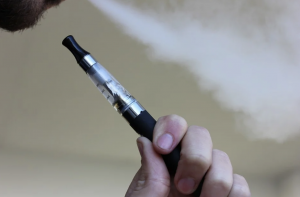Responding to COVID-19, Vaping, and Substance Abuse in Maryland

Before the COVID-19 pandemic, there was already a vaping and substance abuse crisis in America’s schools. That crisis is far from over. Once the pandemic arrived on America’s soil, the role e-cigarette usage played in expression of COVID-19 illness was a topic of discussion for health professionals. Now, thanks to a recent study published by The Journal of Adolescent Health, there is data confirming a worrying relationship between COVID-19 and e-cigarette usage. “Teenagers and young adults ages 13 to 24 who use e-cigarettes are five times more likely to be diagnosed with Covid-19 than their non-vaping peers.”
Yet, health professionals aren’t only focusing on the relationship between e-cigarette usage and COVID-19. They are also concerned about the relationship between COVID-19 and substance abuse – namely, opioid usage.
In a recent interview by WTOP News, Associate Professor in the Department of Health, Policy and Management at the Johns Hopkins Bloomberg School of Public Health, Brendan Saloner believes that life changing situations brought on by COVID-19, such as social isolation, job loss, anxiety, and more can cause individuals to turn to opioids.
WTOP News also interviewed Maryland Department of Health’s Behavioral Health Administration deputy secretary Dr. Aliya Jones. Dr. Jones explained the overdose recovery rate for those abusing and overdosing on opioids is decreasing due to the social isolation. Those using opioids are using alone and thus decreasing the chance for others to revive the overdosed individual with overdose reversal drugs such as Naloxone.
Sadly, Maryland is no stranger to this opioid epidemic. The State of Maryland has created and developed many resources to address this issue. In 2017, Maryland launched their statewide “Before It’s Too Late” effort, which brings awareness to the heroin, opioid, and Fentanyl crisis in Maryland. It is set up to “mobilize all available resources for effective prevention, treatment, and recovery.”

Notably, Queen Anne’s County residents are busting out the color purple for an initiative they call “QAC Goes Purple.” The substance abuse awareness and prevention program empowers Queen Anne’s County youth and community members to ‘Go Purple’ as a sign of taking a stand against substance abuse. The Queen Anne’s County Office of the Sheriff and Queen Anne’s County Drug-Free Coalition, in partnership with the Opioid Intervention Team/QAC Department of Health, Queen Anne’s County Public Schools, Queen Anne County Commissioners and Mid-Shore Community Foundation all worked together to set up the program.
This substance abuse awareness and prevention program promotes education and awareness, including the creation of purple clubs in middle and high schools, through which students learn they do not need drugs or alcohol to meet life’s challenges. Residents and business owners can join the cause by illuminating their homes or business buildings in purple light starting on September 1 and leaving the lights up throughout the entire month. More information on this program can be found on QAC Goes Purple.
Always remember that students throughout Maryland in need of a resource to anonymously report issues related to drug use and abuse can use the State of Maryland’s anonymous 24/7 reporting system: Safe Schools Maryland.

Anonymous reporters can submit their concerns in one of three ways: a free mobile app, the safeschoolsmd.org website, or the toll free number 1-833-MD-B-Safe. Mobile app and website users can submit their tip under the category “Drug distribution, Use, Sale, Abuse.”
